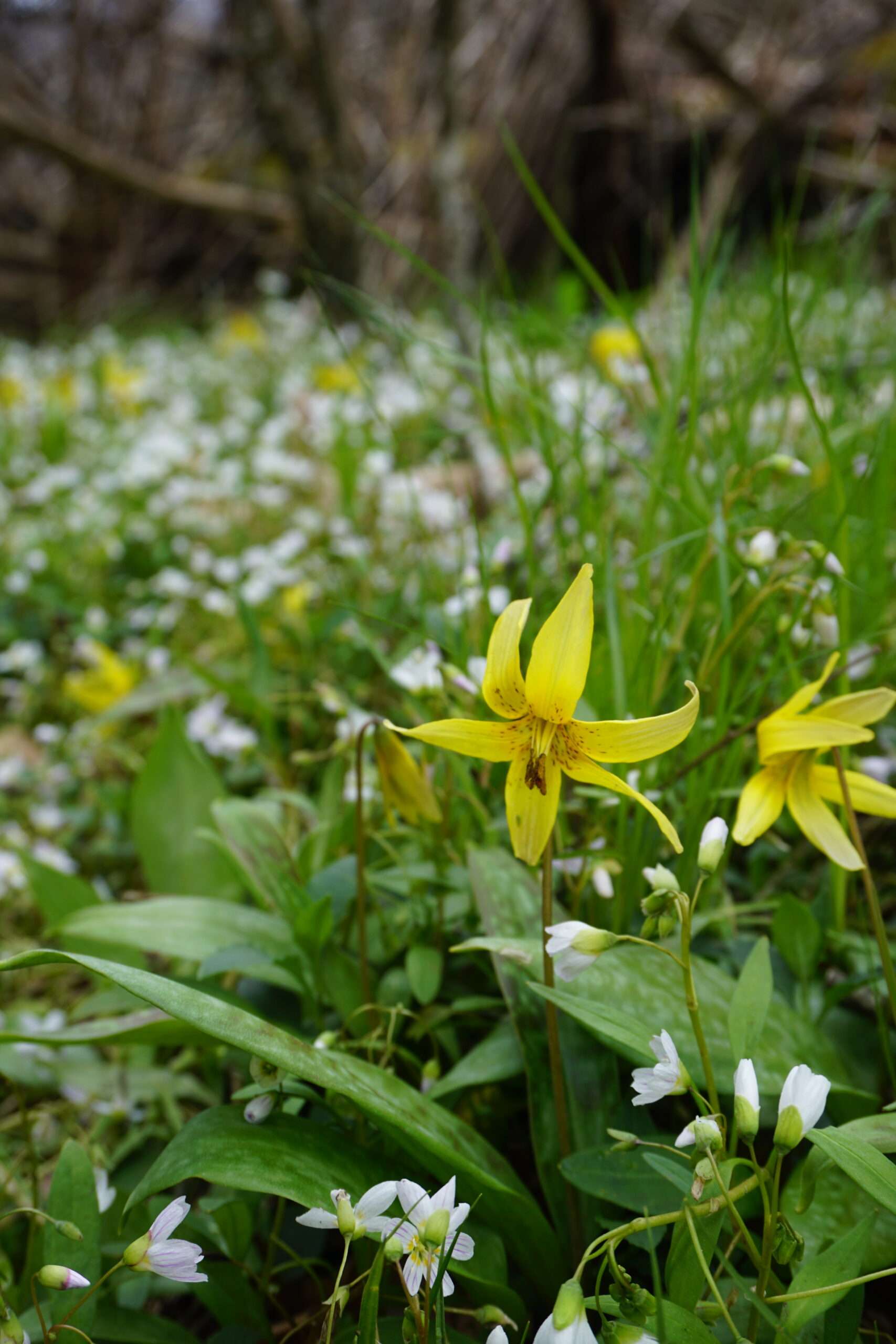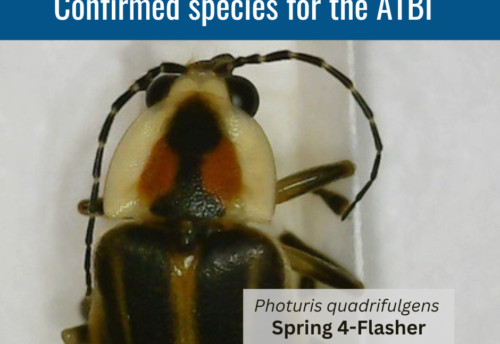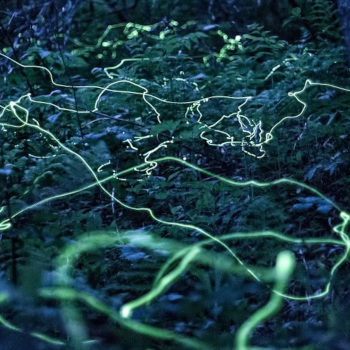
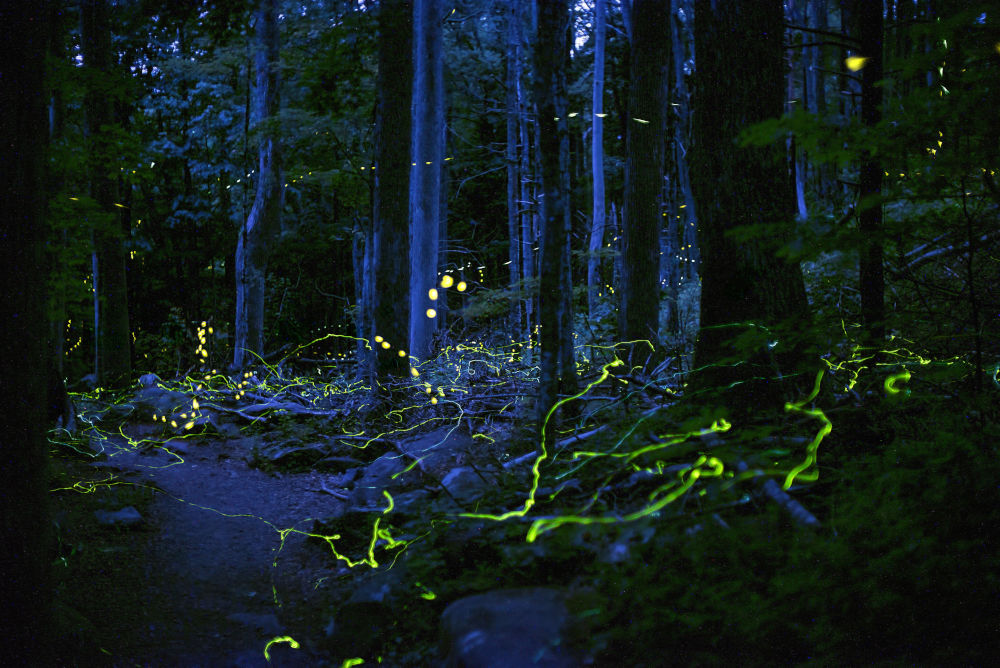
Blue ghosts
The blue ghost firefly (Phausis reticulata) is a species of particular fascination here in the Great Smoky Mountains. Their eerie name comes from the singular, long-lasting, flash of males which can remain illuminated for up to one minute at a time. These flashes are often so bright that they cast onto the ground below creating a spotlight effect. Blue ghost females are less alluring, but nonetheless interesting. While males look like typical, winged beetles, female blue ghosts do not grow wings and resemble larvae even as adults. They glow from a series of four to nine spots located throughout their bodies for the entirety of the night and can be seen from upwards of 10 feet away in very dark settings. Both sexes are small compared to most other fireflies, growing to around 5-9 mm or about the size of a grain of rice.
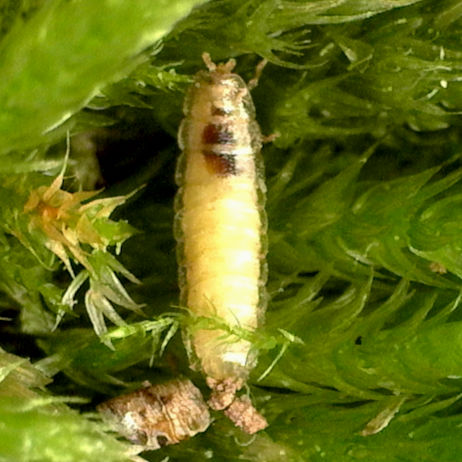
Blue ghost larva. Photo: W Kuhn 
Blue ghost adult female. Photo: W Kuhn 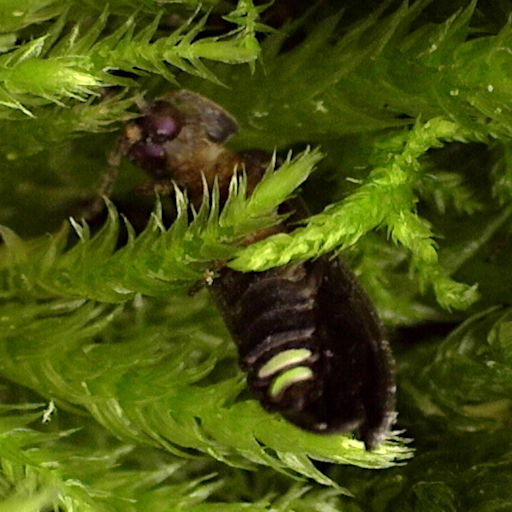
Blue ghost adult male. Photo: W Kuhn 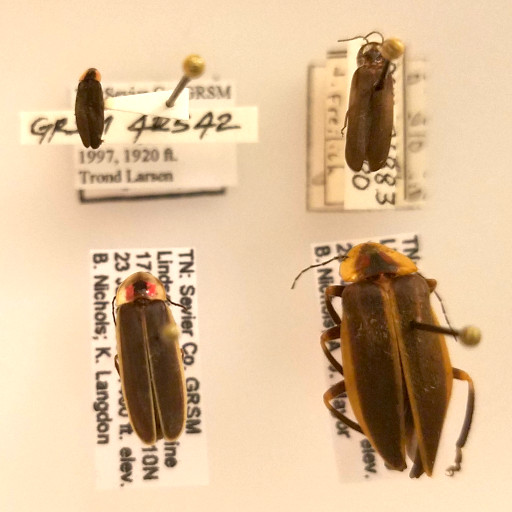
Some fireflies of the Smokies (left to right, top to bottom): Lucidota atra, Phausis reticulata, Photinus carolinus, Photuris sp. GSMNP Natural History Collection. Photo: W Kuhn
Where to find them
Blue ghosts can be found in mountains and valleys of the Southern Appalachians, including parts of Georgia, Tennessee, North Carolina, and South Carolina. In these regions, Blue ghosts like wooded areas ranging from 200 to 4,200 feet in elevation. Males typically hover 18-36 inches above the ground, while females often hide under leaf litter.
When they display
Blue ghosts have two peak display periods in the Southern Appalachians. The first begins in April and lasts until late May. Within this peak, these insects can be seen in the highest densities from 9:00-9:30 PM. The second peak in mid-June is smaller, with the best viewing from 9:30-11:00 PM, since sunset is delayed as summer progresses. During these periods, viewers are in for a spectacular light show that’s quite different that the display of most other fireflies. Unfortunately, this species and its show is at risk, just as many other species facing the march of human development.
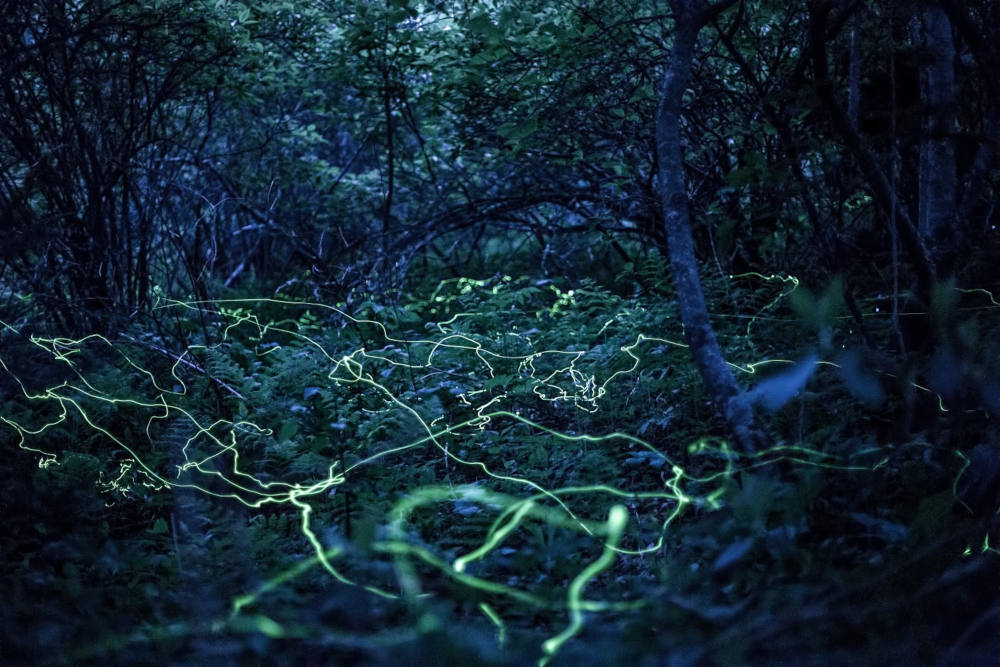
Problems faced by fireflies
Currently, blue ghosts face a number of problems caused by human activity in their habitat. Light pollution from sprawling cities and cars increases ambient light, making it harder for females to see males; that is if the males even flash with increased background photic noise. The second is habitat loss from human development. As forests are turned into agricultural fields or housing, valuable habitat is lost. This is a particular issue for Blue Ghosts because of how relatively immobile they are. Females cannot fly and rely on at least a moderately moist understory to survive. Males are similarly bound to a small area due to their weak flying skills. For these reasons populations of Blue Ghosts are limited to small home ranges, which yields a species that is likely to dwindle in the face of habitat loss.
How can you help?
As an individual, there are numerous things you can do in your own backyard to help limit your impact on blue ghosts and many of the other species of fireflies that call the southeast home. Let your yard run wild sometimes! By allowing vegetation to grow, you create a microhabitat that is more favorable for fireflies. Yard lights can help you get around at night, but they create light pollution and darkness is key for fireflies. Consider using timers that allow for periods of darkness or just turn off your outside lights when you’re not actively utilizing the space. On a larger scale you can purchase organically grown fruits and vegetables that don’t utilize pesticides, which can kill firefly adults and soil-dwelling larvae. Lastly, you can support national parks and other public reserves. These spaces represent a few of the remaining vestiges of relatively pristine firefly habitat and your support helps conserve these natural landscapes for future generations of fireflies, as well as humans.
Find out more
For more information about fireflies, as well as some beautiful photos, check out the following books:
- Fireflies, glow-worms, and lightning bugs: Identification and natural history of the fireflies of the eastern and central United States and Canada by Lynne Faust (link)
- Firefly experience by Radim Schreiber (link)
- Silent sparks: The wondrous world of fireflies by Sara Lewis (link)
This article was written by Gus Elmore, a biology intern at Discover Life in America. Find out more about DLiA and its internship program at dlia.org.
Sources
- Faust, L. F. (2017). Fireflies, glow-worms, and lightning bugs: Identification and natural history of the fireflies of the eastern and central United States and Canada. University of Georgia Press. 376 pp. (link)
- Frick-Ruppert, J. E., & Rosen, J.J. (2008). Morphology and behavior of Phausis reticulata (Blue Ghost Firefly). Journal of the North Carolina Academy of Science. 139-147. (link)
Thanks to Radim Schreiber for granting us the use his gorgeous photos.

